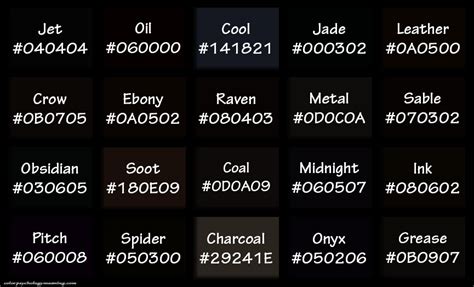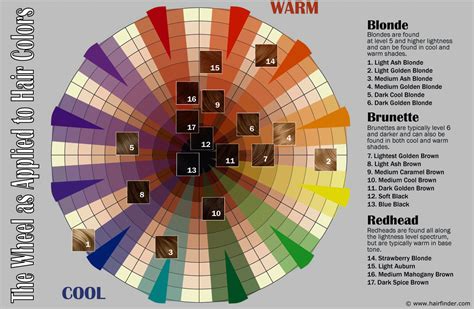The hair color wheel is a revolutionary tool that empowers hair enthusiasts and professionals alike to master the art of hair coloring. By understanding the underlying principles of color theory, individuals can achieve stunning transformations that complement their skin tones, enhance their features, and express their unique style.

Understanding the Basics: Navigating the Hair Color Wheel
12 Essential Hue Categories:
The hair color wheel comprises 12 distinct hue categories, each representing a specific color family:
1. Primary Hues: Red, Yellow, Blue
2. Secondary Hues: Orange, Green, Purple
3. Tertiary Hues: Red-Orange, Yellow-Orange, Yellow-Green, Blue-Green, Blue-Purple, Red-Purple
Relationship between Hues:
The hues on the wheel are arranged in a systematic manner, illustrating their relationships:
– Complementary Colors: Hues that are directly opposite on the wheel, such as red and green, create high-contrast effects.
– Analogous Colors: Hues that are adjacent to each other on the wheel, such as blue, blue-green, and green, create harmonious blends.
– Triadic Colors: Hues that form an equilateral triangle on the wheel, such as red, yellow, and blue, offer vibrant and dynamic color combinations.
Choosing the Right Shades for Your Skin Tone: Color Assessment
Warm Undertones:
Individuals with warm undertones have yellow, peach, or golden hues in their skin. They typically suit hair colors with warm tones, such as copper, auburn, or caramel.
Cool Undertones:
Those with cool undertones possess pink, blue, or olive hues in their skin. They complement hair colors with cool tones, such as ash, icy blonde, or silver.
Neutral Undertones:
Individuals with neutral undertones can wear both warm and cool hair colors. They have versatile skin tones that adapt well to any color palette.
Transforming Your Tresses: A Step-by-Step Hair Color Journey
1. Consultation:
– Discuss your desired hair color with your stylist.
– Determine the appropriate shade based on your skin tone, eye color, and hair history.
2. Preparation:
– Protect your hair with a pre-color treatment to minimize damage.
– Divide your hair into sections for easier application.
3. Color Application:
– Use a professional hair color kit or visit a salon for expert application.
– Follow the manufacturer’s instructions precisely, ensuring even coverage.
4. Processing:
– Allow the hair color to sit for the prescribed time, as per the product instructions.
– Check the color development periodically to avoid overprocessing.
5. Post-Treatment Care:
– Rinse thoroughly and condition to restore moisture.
– Use color-protecting products to enhance longevity and vibrancy.
Applications of Hair Color Theory: Unleashing Creativity
The hair color wheel not only guides color selection but also inspires innovative applications:
Color Correction:
– To fix unwanted hues, utilize the opposite color on the wheel. For example, to remove brassy tones, use blue-based hair dye.
Fashionable Ombre:
– Create a gradual blend of colors by transitioning from one hue to another on the wheel, such as a copper-to-blonde ombre.
Artistic Highlights:
– Add subtle accents to your hair by using lighter or darker shades of the same hue or from adjacent color families.
Common Color Pitfalls and Solutions: Navigating Challenges
Uneven Color Absorption:
– Use a clarifying shampoo before coloring to remove product buildup that can hinder color penetration.
– Apply color in thin, even layers to ensure consistent absorption.
Fading and Brassiness:
– Maintain colored hair with products specifically designed to prevent fading.
– Use purple shampoos to neutralize unwanted warm tones.
Damage from Overprocessing:
– Avoid leaving hair color on for longer than recommended.
– Use deep conditioners and hair masks to repair damage.
Conclusion
The hair color wheel empowers individuals to unlock the world of hair coloring, allowing them to achieve stunning and personalized transformations. By understanding color relationships and following best practices, hair enthusiasts can transform their locks into vibrant expressions of their individuality while maintaining healthy hair. Whether experimenting with bold new hues or subtle enhancements, the hair color wheel serves as an invaluable tool for achieving hair-coloring mastery.
